Mindful Living Through Minimalism: Simplify for Clarity
Category: Lifestyle
Discover the Path to Mindful Living Through Minimalism
If you’ve found yourself overwhelmed by the clutter of everyday life—physically, mentally, and emotionally—you’re not alone. Many who seek mindful living desire a simpler existence that brings clarity and fulfillment, but struggle with where to start or how to maintain it. This guide is tailored for those ready to embrace a more intentional lifestyle through minimalism, offering practical insights that go beyond just tidying up your space. Whether you’re a beginner curious about minimalism or someone who’s tried simplifying before without lasting change, this post respects your journey and meets you where you are. You may have landed here searching for actionable steps, inspiration, or a fresh perspective on how eliminating excess can improve your mental wellbeing, focus, and daily joy. What sets this post apart is its clear roadmap combined with mindful principles that prioritize quality over quantity in every part of your life. Read on to explore the core elements of mindful minimalism and learn how to integrate simplicity meaningfully, so you can create space not just around you, but within you—achieving peace and purpose in your daily routine.
- Discover the Path to Mindful Living Through Minimalism
- Understanding Mindful Living
- The Philosophy of Minimalism
- The Connection Between Mindfulness and Minimalism
- Decluttering Your Physical Space Mindfully
- Simplifying Digital Life: Mindful Use of Technology and Digital Decluttering
- Mindful Consumption and Financial Freedom
- Creating Meaningful Routines and Habits
- Building Sustainable Relationships Through Minimalism
- Maintaining Minimalism Mindfully: Tips for Sustaining Mindful Minimalist Practices Long-Term
- Incorporating Mindfulness Practices to Deepen Minimalism
Understanding Mindful Living
At its core, mindful living is about cultivating a deeper sense of awareness, presence, and intentionality in every moment of daily life. It encourages us to step away from autopilot and distractions, inviting us to fully engage with our surroundings, thoughts, and emotions. This conscious approach isn’t just a practice; it’s a transformative mindset that helps reduce stress and enhances overall joy by grounding us in the here and now.
Mindful living integrates seamlessly with minimalism by encouraging purposeful decision-making—whether about the possessions we keep, the activities we pursue, or the relationships we nurture. By embracing awareness, we become more attuned to what truly adds value to our lives, shedding what is unnecessary or overwhelming. With presence, we focus on appreciating the small, meaningful details often overlooked in our busy routines. Finally, through intentionality, every choice—big or small—is made with clear purpose and alignment to our core values, which naturally leads to simplifying life and creating more mental and physical space for what matters most. This synergy not only reduces clutter and distractions but also cultivates a sustainable, fulfilling lifestyle rooted in clarity and peace.
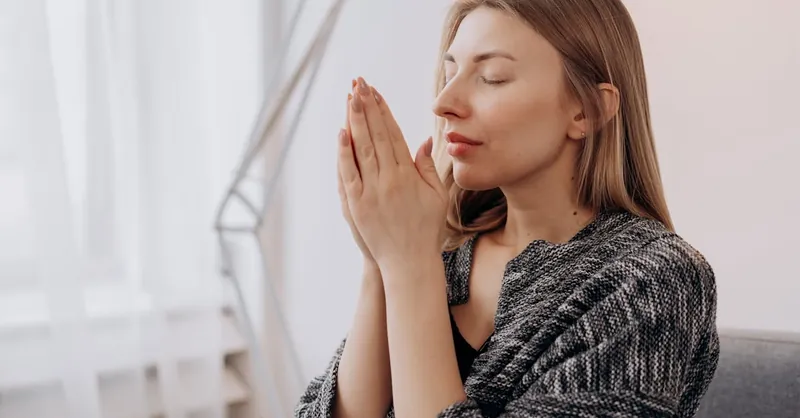
Image courtesy of Mikhail Nilov
The Philosophy of Minimalism
At its essence, minimalism is a thoughtful philosophy centered on living with less to focus on what truly matters. Rather than simply reducing the number of belongings, minimalism encourages a deliberate shift in mindset—prioritizing quality over quantity across all aspects of life. This approach invites us to remove excess distractions, whether material possessions, commitments, or mental clutter, so we can channel our energy and attention toward meaningful experiences, relationships, and personal growth.
Key minimalist principles include:
- Intentional Ownership: Carefully choosing possessions that serve a purpose, evoke joy, or fulfill a genuine need, rather than accumulating items out of habit or societal pressure.
- Simplicity in Choice: Streamlining daily decisions to prevent overwhelm, allowing for greater focus on priorities that align with personal values.
- Sustainable Consumption: Embracing timeless quality, durability, and ethical sourcing over fast, disposable trends.
- Mindful Presence: Cultivating awareness of how possessions and time impact wellbeing, fostering gratitude and contentment with less.
By internalizing these principles, minimalism transcends the physical realm and becomes a pathway to clarity, freedom, and purposeful living. This philosophy empowers us to reclaim time and mental space, reduce stress, and nurture deeper connections by focusing on meaningful elements rather than superficial abundance. Living with less is not about deprivation; it’s about amplifying the value of what remains, creating a life rooted in intention and genuine fulfillment.
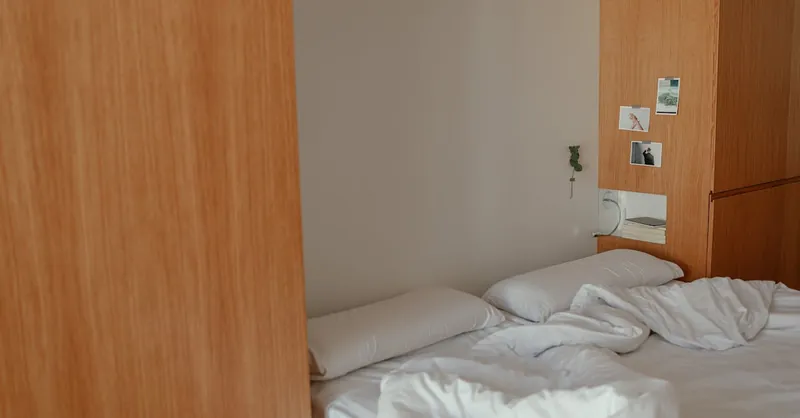
Image courtesy of Cup of Couple
The Connection Between Mindfulness and Minimalism
When mindfulness and minimalism intersect, they create a powerful synergy that fosters deeper clarity and significantly enhances mental well-being. Mindfulness invites us to be fully present and aware of our thoughts, feelings, and surroundings, while minimalism provides the practical framework to simplify life by removing excess physical and mental clutter. Together, they enable a lifestyle where every choice is made with intention, reducing overwhelm and promoting inner peace.
How Mindfulness Enhances Minimalism
Mindfulness sharpens our awareness of what truly adds value to our lives, helping us distinguish between genuine needs and accumulated distractions. This heightened awareness is essential for effective minimalism because it:
- Encourages us to pause and reflect before acquiring new possessions, preventing impulse buying and promoting intentional ownership.
- Helps recognize emotional attachments to clutter, allowing a mindful release of items that no longer serve us.
- Cultivates gratitude for what we already have, deepening contentment and reducing the urge for constant accumulation.
How Minimalism Supports Mindful Living
Conversely, minimalism creates the physical and mental space required for sustained mindfulness practice by:
- Removing sensory overload from cluttered environments, which often triggers stress and distracts the mind.
- Simplifying routines and commitments, freeing time to engage in mindful activities like meditation, journaling, or nature walks.
- Encouraging intentional living, which aligns daily habits with values and promotes emotional resilience.
By integrating mindfulness and minimalism, you move beyond superficial tidiness to achieve mental clarity, emotional balance, and a profound sense of well-being. This combined approach not only diminishes stress and decision fatigue but also cultivates lasting joy through living with purpose and presence.
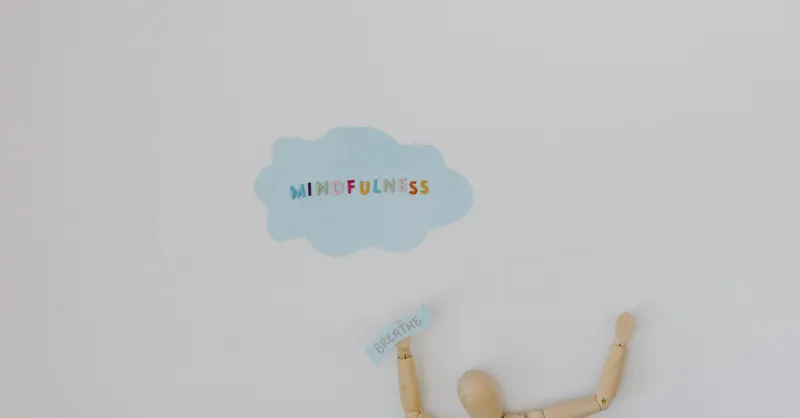
Image courtesy of Tara Winstead
Decluttering Your Physical Space Mindfully
Embarking on the journey of decluttering is a fundamental step toward mindful living through minimalism. However, the process often goes beyond simply discarding items—it involves confronting emotional attachments and practicing intentional decision-making. To create a truly restful, functional, and clear living environment, it's essential to approach decluttering with awareness, patience, and kindness toward yourself.
Step-by-Step Practical Advice for Mindful Decluttering
-
Set a Clear Intention
Before you begin, clarify why you want to declutter. Whether it’s to reduce stress, increase focus, or create a calming home sanctuary, anchoring your efforts in intention nurtures motivation and mindful presence throughout the process. -
Start Small and Specific
Choose one area or category (e.g., books, clothes, kitchen tools) to prevent overwhelm. Breaking down decluttering into manageable chunks ensures steady progress without emotional burnout. -
Engage in Mindful Awareness
As you handle each item, pause and ask yourself: - Does this serve a practical purpose or bring me joy?
- When was the last time I used or appreciated this?
-
Does holding onto it align with my current values and lifestyle?
These questions cultivate conscious ownership, helping you make intentional choices rather than reacting on autopilot. -
Acknowledge Emotional Resistance
It’s common to feel hesitation or guilt, whether from sentimental value, fear of waste, or uncertainty. Recognize these emotions without judgment. If an item triggers strong feelings, set it aside temporarily and return later with fresh perspective. -
Use Decision-Making Strategies
Implement tactics like the “Four-Box Method”—label boxes as Keep, Donate, Sell, or Recycle/Trash—to categorize items effectively. Alternatively, the “One-Year Rule” is helpful: if you haven’t used or needed the item in the past year, it might be time to let it go. -
Express Gratitude and Release
Before parting with possessions, express gratitude for their role in your life. This mindful appreciation helps ease detachment and honors your past experiences, reinforcing a positive mindset around letting go.
Overcoming Common Decluttering Challenges with Mindfulness
- Perfectionism Trap: Accept that decluttering is a journey, not an instant fix. Progress over perfection builds sustainable habits.
- Decision Fatigue: Take regular breaks and limit sessions to 20-30 minutes to maintain clear thinking.
- Attachment to “What If” Scenarios: Gently challenge hypothetical fears by focusing on present realities and trusting your current needs.
By integrating these mindful strategies into your decluttering routine, you not only clear physical clutter but also cultivate mental resilience and emotional clarity. This thoughtful process sets a strong foundation for sustainable minimalism and a serene living space that truly supports your intentions and wellbeing.

Image courtesy of Ron Lach
Simplifying Digital Life: Mindful Use of Technology and Digital Decluttering
In today’s hyper-connected world, our digital environments can become just as cluttered and overwhelming as our physical spaces—if not more so. Simplifying digital life through mindful use of technology and intentional digital decluttering is essential for reducing distractions, enhancing focus, and cultivating genuine presence. By thoughtfully managing notifications, apps, and digital consumption, we create mental space that promotes mindfulness and intentional living.
Practical Strategies for Digital Decluttering and Mindful Tech Use
-
Audit Your Digital Devices and Apps
Regularly review and uninstall apps, browser extensions, or subscriptions that no longer serve a meaningful purpose. Keeping only essential, value-adding digital tools helps reduce cognitive overload. -
Streamline Notifications
Disable non-critical notifications to minimize constant interruptions. Prioritize alerts from key contacts or apps that support your goals, allowing for better focus and fewer reactive impulses. -
Organize Digital Files Mindfully
Create clear folder structures and regularly archive or delete unnecessary files, emails, and photos. A tidy digital workspace mirrors physical tidiness and reduces mental clutter. -
Set Intentional Screen Time Limits
Use built-in device settings or third-party apps to monitor and limit time spent on social media, news, or entertainment. Allocating specific periods for digital use encourages balance and presence in offline moments. -
Practice Mindful Consumption
Curate your digital content by following accounts and subscribing only to sources that inspire, educate, or align with your values. Avoid mindless scrolling by approaching digital consumption with clear purpose. -
Schedule Regular Digital Detoxes
Designate timeframes—whether hours, days, or weekends—free from screens to reconnect with the physical world, replenish your mental energy, and nurture real-life relationships.
By integrating these mindful digital habits, you reduce digital distractions and open space for conscious engagement with activities that nourish your wellbeing. Simplifying your digital landscape is a crucial extension of minimalism and mindful living, empowering you to reclaim your attention, foster presence, and live intentionally both online and offline.

Image courtesy of Lukas
Mindful Consumption and Financial Freedom
Embracing minimalism naturally cultivates intentional spending habits, which are essential for achieving financial freedom and reducing monetary stress. Mindful consumption encourages us to reflect carefully before making purchases, shifting the focus from impulsive buying to acquiring only what genuinely adds value and aligns with our core priorities. This thoughtful approach not only prevents clutter—but also fosters a healthier relationship with money, helping to break the cycle of consumerism that often leads to debt and overwhelm.
How Intentional Spending Impacts Financial Health
-
Prioritize Needs Over Wants
Distinguishing between essential items and fleeting desires empowers you to allocate resources more wisely, avoiding unnecessary expenses and saving more for long-term goals. -
Reduce Impulse Purchases
Developing awareness around shopping triggers (stress, boredom, social pressure) minimizes impulsive decisions. Techniques like waiting 24 hours before buying or creating a budget aligned with your values help control emotional spending. -
Invest in Quality and Longevity
Minimalism promotes selecting durable, multifunctional, and meaningful products that last, reducing the need for frequent replacements and lowering overall costs. -
Simplify Financial Commitments
Cutting back on subscriptions, memberships, or services that no longer serve you creates financial breathing room and streamlines monthly expenses.
The Path to Financial Freedom Through Minimalism
By adopting mindful consumption habits, you steadily build a sustainable financial foundation that supports your broader life goals and aspirations. Minimalism reduces stress related to money by eliminating the clutter of unnecessary possessions and recurring costs, ultimately increasing savings and financial resilience. This shift fosters empowerment and independence, enabling you to focus on experiences, relationships, and personal growth without being weighed down by material distractions. In this way, minimalism is not just about living with less—it’s about living better by freeing yourself from the constraints of consumer-driven financial burdens.
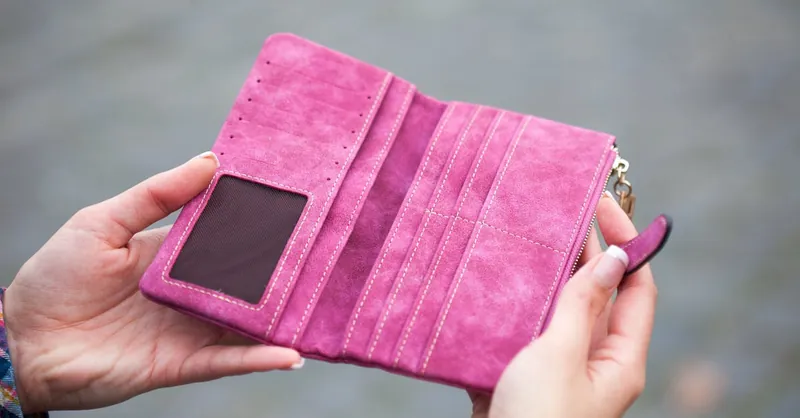
Image courtesy of Robert Bogdan
Creating Meaningful Routines and Habits
Building daily mindful routines that support minimalism is key to sustaining simplicity without falling into rigidity. The goal is to cultivate flexible yet intentional habits that seamlessly integrate with your lifestyle, encouraging ongoing presence and clarity rather than adding pressure or constraint. Meaningful routines act as gentle frameworks that nurture your values, reduce decision fatigue, and reinforce mindful awareness throughout the day.
How to Build Daily Mindful Routines That Foster Simplicity
-
Start with Small, Purposeful Actions
Focus on incorporating simple habits that align with your minimalist values—such as a 5-minute morning meditation, mindful breathing before meals, or a quick evening reflection on what added value your day held. These intentional acts anchor your awareness without overwhelming your schedule. -
Prioritize Flexibility Over Perfection
Avoid rigid timelines or overly strict rules that can create resistance or stress. Instead, adopt habits with room for adaptation—listen to your energy and needs, adjusting your routine accordingly. This flexibility helps maintain enthusiasm and long-term consistency. -
Combine Minimalism with Mindfulness in Daily Tasks
Infuse ordinary activities with full attention—whether it’s savoring a cup of tea, tidying a small space consciously, or walking without distractions. This transforms routine chores into moments of calm and presence, reinforcing your minimalist mindset in practice. -
Limit Decision Fatigue by Simplifying Choices
Streamline your daily choices where possible, such as laying out clothes the night before, planning simple meals, or scheduling focused work periods interspersed with mindful breaks. Reducing unnecessary decisions preserves mental energy for what truly matters. -
Reflect and Adjust Regularly
Set aside brief weekly check-ins with yourself to evaluate which routines uplift you and which feel burdensome. Mindful reflection allows you to refine your habits, letting go of what no longer serves simplicity and embracing what enhances mindful living.
By creating mindful routines that are intentional yet adaptable, you establish a sustainable rhythm that supports a minimalist lifestyle without harsh discipline. This balanced approach nurtures ongoing clarity, presence, and well-being—empowering you to live simply while honoring your unique pace and priorities.
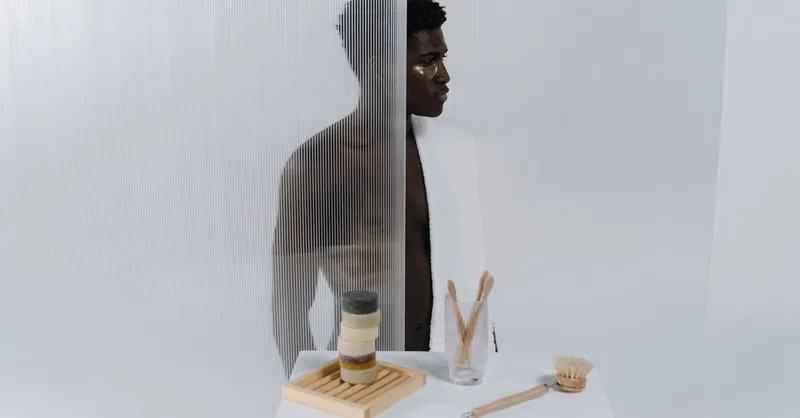
Image courtesy of cottonbro studio
Building Sustainable Relationships Through Minimalism
In the pursuit of mindful living, minimalism plays a vital role in fostering authentic connections by encouraging intentionality in how we engage with others. Simplifying social interactions helps prevent social overwhelm—a common challenge in today’s fast-paced, hyper-connected world—by prioritizing meaningful relationships over quantity. Rather than spreading energy thin across numerous superficial contacts, minimalism invites you to focus on nurturing those relationships that truly align with your values and bring joy, support, and growth.
The Role of Intentionality in Nurturing Authentic Connections
Being intentional about your relationships means consciously choosing who to invest your time and emotional energy in, which leads to deeper, more fulfilling bonds. This mindset helps you:
-
Set Clear Boundaries
Protect your mental and emotional space by understanding your limits and communicating them kindly but firmly, reducing social fatigue and enabling you to be fully present when you are with others. -
Prioritize Quality Over Quantity
Focus on a smaller circle of friends or family whose presence is uplifting and harmonious, rather than maintaining a broad network of casual acquaintances that can drain your energy. -
Practice Active Presence
Engage fully and mindfully in conversations, giving your undivided attention without distractions—this enhances trust, empathy, and meaningful connection. -
Cultivate Mutual Support
Choose relationships that offer reciprocal care, where both parties feel valued and understood, fostering emotional wellbeing and resilience.
By integrating these principles, minimalism becomes a powerful tool for simplifying social life, creating space for deeper, more intentional relationships that enrich your life rather than complicate it. This not only improves your personal wellbeing but also aligns your social environment with the clarity and purpose that mindful minimalism advocates.
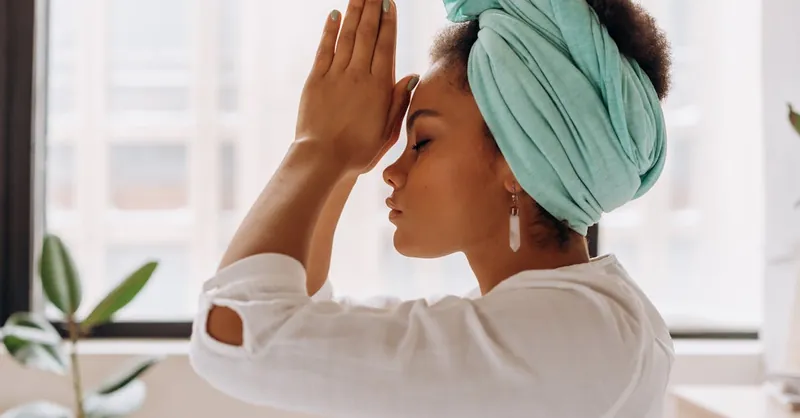
Image courtesy of Mikhail Nilov
Maintaining Minimalism Mindfully: Tips for Sustaining Mindful Minimalist Practices Long-Term
Embracing minimalism as a mindful way of living is a transformative journey that requires ongoing attention and adaptability. To sustain mindful minimalist practices long-term, it’s essential to regularly revisit your values and intentions, allowing your minimalist lifestyle to evolve alongside changes in your life circumstances and priorities. Staying mindful about minimalism means more than just maintaining a decluttered space—it involves continuously curating your environment, habits, and commitments with awareness and purpose.
Strategies for Mindfully Sustaining Minimalism Over Time
-
Conduct Periodic Life Audits
Schedule regular reflections—monthly or quarterly—to assess what is truly serving your wellbeing and aligning with your evolving goals. Ask yourself: Are my possessions, routines, and relationships still reflective of my current values? This practice keeps your minimalism intentional rather than stagnant. -
Adapt Flexibly to Life Changes
Life transitions such as moving, career shifts, or family growth often necessitate reevaluating your minimalist approach. Mindful adaptation involves embracing these changes without guilt, letting go of practices or items that no longer fit, and welcoming new strategies that support your simplicity and presence. -
Prioritize Consistent Mindfulness Over Perfection
Recognize that minimalism is a dynamic, imperfect process focused on progress rather than perfection. Gently redirect attention when you notice accumulating clutter or distraction, and recommit to simplifying with compassion instead of self-judgment. -
Create Rituals That Reinforce Minimalist Intentions
Rituals such as mindful tidying sessions, gratitude journaling for what you own, or intentional digital detoxes can anchor your commitment and prevent drift toward consumerism or overwhelm.
By integrating these mindful maintenance habits, you nurture a sustainable minimalist lifestyle that remains deeply attuned to your personal growth, providing ongoing clarity, freedom, and purpose as your life unfolds. This approach not only preserves the benefits of minimalism but also enriches your capacity for mindful living in every moment.

Image courtesy of Arias-Mukha
Incorporating Mindfulness Practices to Deepen Minimalism
To truly embody mindful living through minimalism, it’s essential to integrate mindfulness practices such as meditation, journaling, and reflection that deepen your awareness and reinforce intentional simplicity. These practices complement minimalism by helping you cultivate presence, reduce mental clutter, and nurture a clearer sense of purpose beyond the physical act of decluttering.
Meditation: Cultivating Presence and Clarity
Regular meditation anchors you in the present moment, allowing your mind to quiet and focus. This heightened state of awareness enables you to observe thoughts and impulses without immediately reacting, which is crucial in resisting consumerist urges and fostering mindful choices about possessions, habits, and commitments. Even a few minutes daily can significantly improve emotional balance and strengthen your resolve to live intentionally.
Journaling: Reflecting on Intentions and Growth
Journaling offers a powerful tool to track your minimalist journey by capturing insights, challenges, and progress. Writing prompts such as “What truly adds value to my life today?” or “How did I practice simplicity and presence?” encourage self-exploration and reinforce the purpose behind your minimalist choices. This practice enhances self-awareness, making it easier to align actions with core values and recognize when adjustments are needed.
Reflection: Regular Mindful Check-Ins
Set aside moments for intentional reflection—whether weekly or monthly—to evaluate your alignment with minimalist principles and mindful living. Asking questions like:
- Am I holding onto anything out of habit or fear rather than genuine value?
- Do my current routines support my mental and emotional wellbeing?
These reflective pauses maintain clarity, prevent overwhelm, and sustain motivation by ensuring your minimalist lifestyle evolves with conscious awareness and compassion.
By weaving meditation, journaling, and reflection into your daily and weekly routines, you strengthen the foundational mindfulness that supports and enriches minimalism. This integrated approach fosters sustained mental clarity, emotional resilience, and a profound connection to the simplicity that nurtures your overall wellbeing and authentic living.

Image courtesy of cottonbro studio
